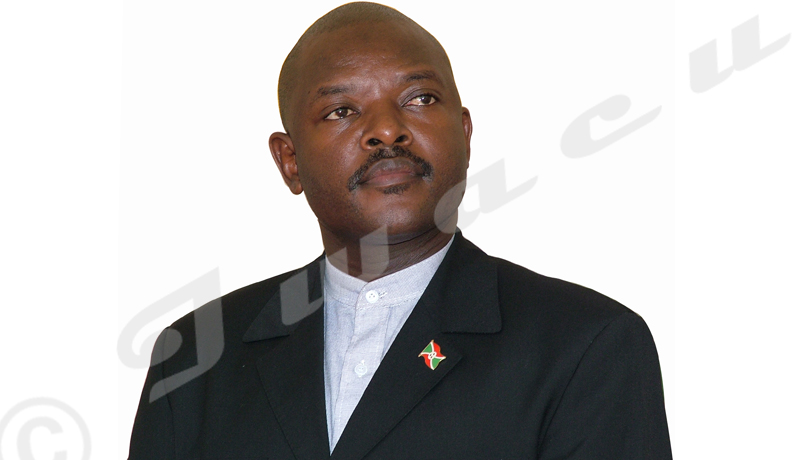BREAKING NEWS :Burundi President dead due to heart attack

President Pierre Nkurunziza
Prosper Ntahorwamiye, Spokesman for the Burundian government says President Pierre Nkurunziza died at “Natwe Turashoboye” Hospital in Karusi Province in the afternoon of June 8.
In a statement issued this June 9, Prosper Ntahorwamiye says President Nkurunziza felt discomfort in the night of June 6 and quickly went to the hospital for treatment.
“Since June 7, his health improved and he spoke with the people who were near him. Surprisingly, in the afternoon of June 8, his health condition suddenly changed due to a heart attack,” reads the statement.
The Burundian government urges the people to remain serene. “The government grants seven days of mourning starting from June 9,” he says.
Pierre Nkurunziza was the President of Burundi since 2005.
Evariste Ndayishimiye was elected to succeed him in the general elections held on May 20.
President Pierre Nkurunziza
Nkurunziza was born in 1964 in Burundi’s capital city of Bujumbura.[4] He was raised in the province of Ngozi in northern Burundi.[5] His father, Eustache Ngabisha, was a Catholic Hutu connected with the royal family. His mother was a Protestant Tutsi assistant nurse.[6] Ngabisha was enlisted to the ranks of the pro-independence UPRONA party and elected to the Parliament of Burundi in 1965, later becoming governor of two provinces before being killed in 1972[citation needed] during the Burundian Genocide of 1972 when ethnic violence claimed the lives of between 80,000 and 210,000 Burundians.[7][8]
Nkurunziza attended primary school in Ngozi and pursued secondary education at Athénée in Gitega. He later attended the Institut d’Education Physique et des Sports (IEPS) at the University of Burundi in the late 1980s and graduated in 1990 after obtaining his degree in sports education. Before the civil war broke out, he became a sports professor at Lycée de Muramvya in 1991 while still studying psychology and pedagogy.
Nkurunziza became a teacher and assistant lecturer at the University of Burundi in 1992.[6][9] He also began to teach courses at the Institut Supérieur Des Cadres Militaires (ISCAM).
In 1995, he was threatened and joined the CNDD-FDD when hundreds of Hutu students were killed or forced to flee. After rising through the ranks, Nkurunziza was appointed deputy secretary-general of the CNDD-FDD in 1998. In the late 1990s, he was condemned to death by court and trial in absentia. In 2001, he was elected chairman.[10] There was a split in the group in late 2001. He was reelected chairman in August 2004.
During the Burundian Civil War, Nkurunziza is said to have survived a near death experience.[11] He was wounded several times in the war and was given the nickname “Pita”.
Beginning in late 2003 and after the ceasefire agreement, he was appointed Minister for Good Governance in the transitional government of President Domitien Ndayizeye.[12]
Following a series of CNDD-FDD victories in elections held during June and July 2005, Nkurunziza was nominated as the party’s presidential candidate. He was elected president by members of parliament (acting as an electoral college) with a vote of 151 to 162 on 19 August 2005 and took office on 26 August 2005.
He was reelected in 2010 with more than 91% of the vote amidst an opposition boycott[13] and sworn in for his second term on 26 August 2010.[14]
In March 2014, Nkurunziza banned jogging, due to “fears it was being used as a cover for subversion.”[15] According to the BBC, “The tradition of Saturday morning runs started during Burundi’s long years of ethnic conflict”, as residents in the city of Bujumbura, where the surrounding hills were home to armed militants before 2005, “would try to vent their fear and frustration and claustrophobia, by running, often in a group.”[16] The same month, 21 supporters of the opposition Movement for Solidarity and Democracy (MSD) Party were sentenced to life in prison for using “jogging” as a way to organize “an illegal demonstration that turned violent.”[17]

